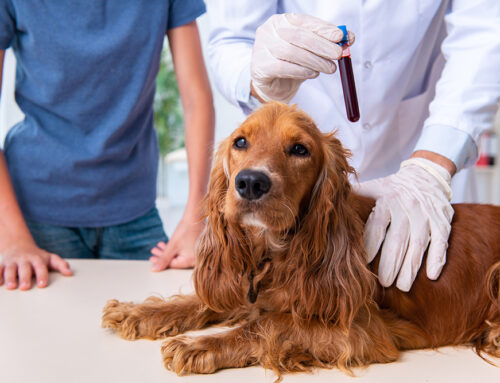Eye redness is concerning in pets, often signaling an underlying condition that requires attention. Bloodshot eyes may be something minor such as an irritant in the eye, like grass or dust, or seasonal allergies. If a pet’s eye redness persists, disease or injury may be to blame. Eye inflammation is a nonspecific sign, making diagnosis necessary. To learn about common pet eye condition causes, signs, and care, read our Milford Animal Hospital team’s guide.
What causes red eyes in pets?
Like people, pets get things in their eyes, especially when they are romping outdoors. Eye redness can be caused by many things, from injury to a health condition such as diabetes or hyperthyroidism. Some eye conditions create inflammation and other complications that harm ocular health. Pet eye redness may be caused by any of these conditions:
- Allergy — Environmental allergens can trigger redness in a pet’s eyes, among other signs, just as they can in people. If your pet has a seasonal allergy, they may be licking and scratching more than usual, or have ear infections and skin and eye redness
- Foreign body — Each day, your pet comes across various things that can irritate their eyes. Dust, sand, or grass can lodge in the eye, causing redness and discomfort. Check your pet’s eyes to determine if they have a foreign body causing redness.
- Conjunctivitis (i.e., pink eye) — Conjunctivitis is an inflammation of the conjunctiva, the thin tissue covering the eye’s surface. This can be caused by infections, allergies, or irritants, among other conditions. Pink eye is sometimes contagious, so quarantine your affected pet from other household pets and call our Milford Animal Hospital team.
- Corneal ulcer — An eye ulcer results from an injury, such as a scratch, and may cause your pet pain and discomfort, including inflammation or redness.
- Dry eye (i.e., keratoconjunctivitis sicca) — This condition reduces the eyes’ tear production, causing dryness, redness, and irritation. If your pet has dry eye, we treat the condition using artificial tears that lubricate the corneas, keeping them clear and bright.
- Breed — Certain breeds are prone to conditions such as bloodshot and irritated eyes. These breeds include those with long fur, large eyes, and flat faces, such as bulldogs, shih tzus, and pugs.
Treatment for common eye disorders in pets
People often reach for over-the-counter (OTC) eye drops when an allergy is irritating their eyes. However, you may wonder what to do for your pet if they have eye redness.
Your pet’s eye issue treatment varies based on the problem’s cause. Injury treatment is extremely different from conjunctivitis treatment. This is why scheduling a veterinary exam for your pet is necessary. We can determine their eye problem’s root cause and establish an effective treatment strategy, which may include one or more of the following:
- Prescribed medications — Depending on the diagnosis, we may prescribe your pet eye drops, ointments, or oral medications.
- Warm compresses — Our team may recommend that you place a warm compress on your pet’s affected eyes to help alleviate discomfort and reduce inflammation.
- Environmental changes — If your furry pal has a seasonal allergy, minimize their allergen exposure by washing their beds and bedding often, limiting their time outdoors, and using an air purifier in your home.
- Regular eye cleaning — Gentle eye cleaning, using a vet-recommended solution, can prevent discharge and debris accumulation.
Preventing eye problems in pets

Not all eye conditions can be prevented, but injuries and accidents can be avoided through awareness. Keep the fur around your pet’s eyes clean and well-groomed, especially if they have long fur. To help remove irritants and bacteria from around your pet’s eyes, wash their face with a damp, warm cloth after spending time outside. Keep a close eye—pun intended—on your pet’s ocular health by noting redness, discharge, and eye alertness. Many times, eye redness is caused by dust, pollen, or a foreign body such as grass. No matter the cause for your furry pal’s eye redness, if the condition persists or worsens, our veterinary team should perform an eye exam.
While occasional eye redness in pets is common, persistent redness or severe cases require prompt veterinary attention. For more information on eye conditions in pets, call our Milford Animal Hospital team.







Leave A Comment